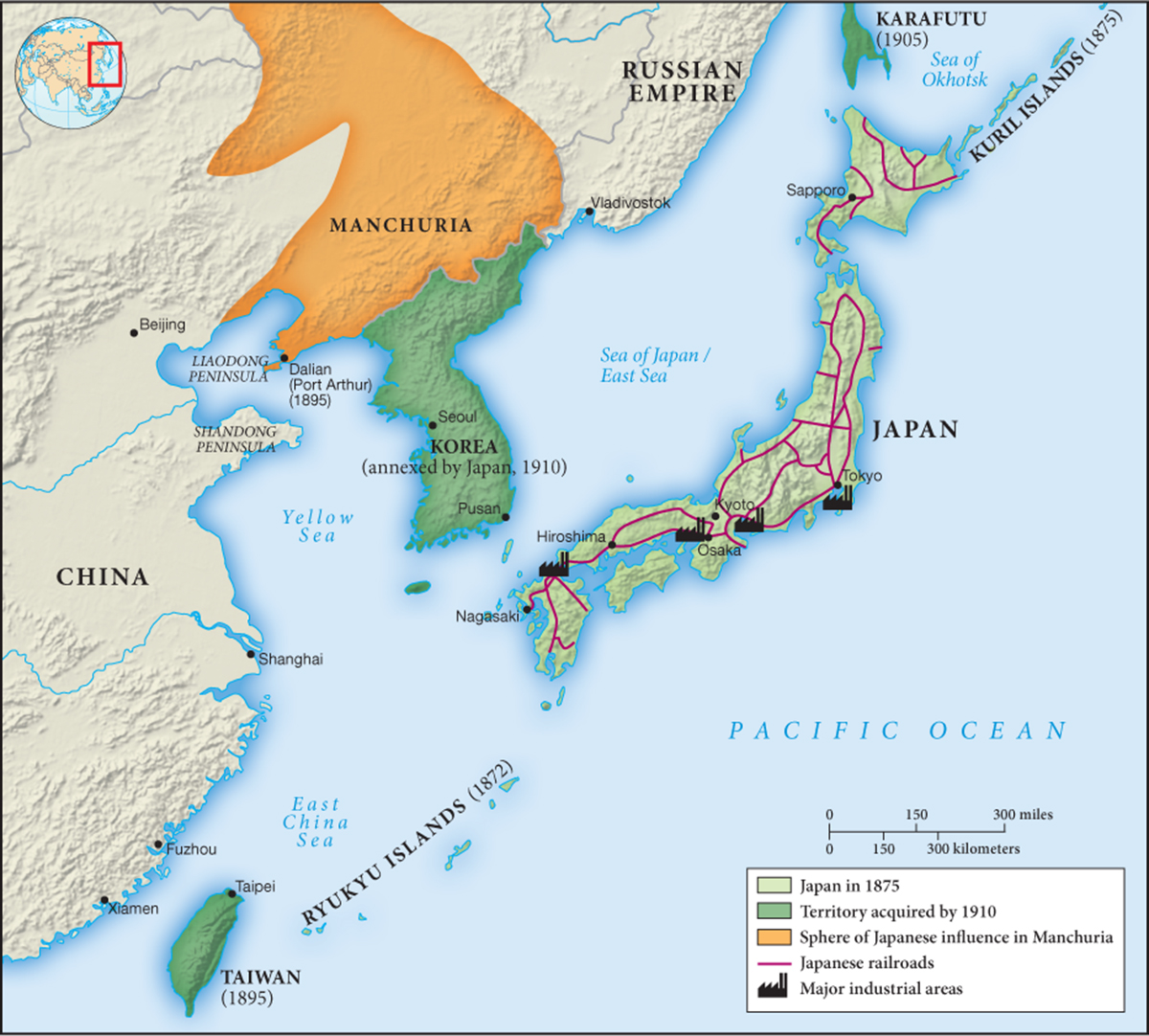Japan and the World
Japan’s modern transformation soon registered internationally. By the early twentieth century, its economic growth, openness to trade, and embrace of “civilization and enlightenment” from the West persuaded the Western powers to revise the unequal treaties in Japan’s favor. This had long been a primary goal of the Meiji regime, and the Anglo-
Connection
How did Japan’s relationship to the larger world change during its modernization process?
Not only did Japan escape from its semi-

In the world of subject peoples, the rise of Japan and its defeat of Russia generated widespread admiration among those who saw Japan as a model for their own modern development and perhaps as an ally in the struggle against imperialism. Some Poles, Finns, and Jews viewed the Russian defeat in 1905 as an opening for their own liberation from the Russian Empire and were grateful to Japan for the opportunity. Despite Japan’s aggression against their country, many Chinese reformers and nationalists found in the Japanese experience valuable lessons for themselves. Thousands flocked to Japan to study its achievements. Newspapers throughout the Islamic world celebrated Japan’s victory over Russia as an “awakening of the East,” which might herald Muslims’ own liberation. Some Turkish women gave their children Japanese names. Indonesian Muslims from Aceh wrote to the Meiji emperor asking for help in their struggle against the Dutch, and Muslim poets wrote odes in his honor. The Egyptian nationalist Mustafa Kamil spoke for many when he declared: “We are amazed by Japan because it is the first Eastern government to utilize Western civilization to resist the shield of European imperialism in Asia.”17
Those who directly experienced Japanese imperialism in Taiwan or Korea no doubt had a less positive view, for its colonial policies matched or exceeded the brutality of European practices. In the twentieth century, China and much of Southeast Asia suffered bitterly under Japanese imperial aggression. Nonetheless, both the idea of Japan as a liberator of Asia from the European yoke and the reality of Japan as an oppressive imperial power in its own right derived from the country’s remarkable modern transformation and its distinctive response to the provocation of Western intrusion.